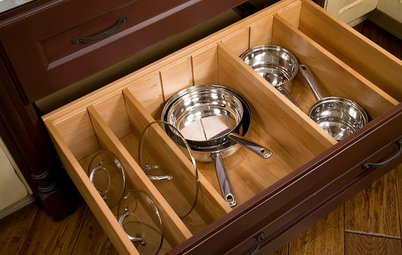Let's Feast: Holiday Food From Around the World
Wondering what to cook this festive season? Take inspiration from these global dishes and try something new
What would the festive season be without the taste of turkey and the smell of gingerbread baking in the oven? Or was that the taste of oysters and the smell of roasting chestnuts? Work up your appetite and get inspired with this tour of Christmas and New Year’s food from around the world. And if you’re looking for something a little different this year, why not incorporate some of these foods into your own holiday dinner or have them as treats throughout the holiday season?
Photo courtesy from Goodwood Park Hotel
Singapore: Western Traditions with an Asian Twist
Having been a colony of the British Empire, Singapore learned to celebrate Christmas the English way — despite the tropical weather. Traditional holiday fare such as roast turkey with trimmings has taken on uniquely Singaporean flavours as households prefer to dine on takeaway chef-made dishes (and the chefs have risen to the challenge). This soy-braised turkey served with toasted spiced almonds and homemade chilli sauce would be perfect served with pumpkin rice or egg noodles. It’s made in the Cantonese style, braised and slow-cooked with traditional Asian aromatics such as cinnamon, cloves, star anise and dark and light soy sauces. Other Singapore turkey twists throughout the years have been chicken rice-stuffed turkey and curry-spiced turkey.
For dessert, another Western tradition – the log cake – also takes on a tropical twist. The sponge and filling flavours range from mango to durian.
Singapore: Western Traditions with an Asian Twist
Having been a colony of the British Empire, Singapore learned to celebrate Christmas the English way — despite the tropical weather. Traditional holiday fare such as roast turkey with trimmings has taken on uniquely Singaporean flavours as households prefer to dine on takeaway chef-made dishes (and the chefs have risen to the challenge). This soy-braised turkey served with toasted spiced almonds and homemade chilli sauce would be perfect served with pumpkin rice or egg noodles. It’s made in the Cantonese style, braised and slow-cooked with traditional Asian aromatics such as cinnamon, cloves, star anise and dark and light soy sauces. Other Singapore turkey twists throughout the years have been chicken rice-stuffed turkey and curry-spiced turkey.
For dessert, another Western tradition – the log cake – also takes on a tropical twist. The sponge and filling flavours range from mango to durian.
United Kingdom: Brandy Pudding
The main Christmas meal in the UK consists of stuffed fowl – usually turkey, goose or duck – accompanied by bacon, potatoes with other vegetables, Brussels sprouts, gravy and cranberry sauce.
Of course, no meal would be complete without dessert. Mince pies, containing a dried fruit mix known as mincemeat, are a mainstay. The Christmas cake is a fruitcake soaked in whiskey or brandy, often topped in an almond glaze and embellished with both edible and inedible decor.
Brandy and other liquors are also added to another dessert, Christmas pudding, which is served with a brandy butter.
The main Christmas meal in the UK consists of stuffed fowl – usually turkey, goose or duck – accompanied by bacon, potatoes with other vegetables, Brussels sprouts, gravy and cranberry sauce.
Of course, no meal would be complete without dessert. Mince pies, containing a dried fruit mix known as mincemeat, are a mainstay. The Christmas cake is a fruitcake soaked in whiskey or brandy, often topped in an almond glaze and embellished with both edible and inedible decor.
Brandy and other liquors are also added to another dessert, Christmas pudding, which is served with a brandy butter.
Australia and New Zealand: Pomegranates and Pavlova
In Australia and New Zealand, Christmas is actually in the summer. This is reflected in the cuisine, with light and fresh dishes such as grilled fish or prawns and salad dominating the holiday table. Pomegranates are also popular at Christmas and fresh cherries are a special holiday treat.
A popular Christmas dessert is pavlova, made up of meringue, whipped cream and fresh fruit. Australia and New Zealand are still fighting over who gets the credit for inventing this beloved dessert, which was named after a Russian ballerina.
In Australia and New Zealand, Christmas is actually in the summer. This is reflected in the cuisine, with light and fresh dishes such as grilled fish or prawns and salad dominating the holiday table. Pomegranates are also popular at Christmas and fresh cherries are a special holiday treat.
A popular Christmas dessert is pavlova, made up of meringue, whipped cream and fresh fruit. Australia and New Zealand are still fighting over who gets the credit for inventing this beloved dessert, which was named after a Russian ballerina.
USA and Canada: Turkey and Side Dishes
In the United States and Canada, the Christmas table is built around roast turkey or duck – the latter being especially popular in New England and on the East Coast. Honey-glazed ham is another favourite. All are served with a variety of side dishes, which often reflect the heritage of the family.
In the United States and Canada, the Christmas table is built around roast turkey or duck – the latter being especially popular in New England and on the East Coast. Honey-glazed ham is another favourite. All are served with a variety of side dishes, which often reflect the heritage of the family.
Mac and cheese, rice and peas, mashed potatoes, corn bread and baked sweet potatoes with marshmallows are all staples. Alternatives are potatoes, vegetables, various kinds of gravy and the mandatory (or controversial, depending on who you ask) cranberry sauce. However, many families also add international dishes from their own traditions or incorporate favourite adopted foods.
The meal usually also includes a baked dessert, often enjoyed with eggnog, punch, sherry or wine.
The meal usually also includes a baked dessert, often enjoyed with eggnog, punch, sherry or wine.
France: Turkey, Chestnuts, Logs and Kings
French tables on Christmas and New Year’s Eve feature foie gras, oysters, snails and salmon. The main course is turkey with chestnuts; dessert is a Christmas “log” (bûche de noël), which is made up of regular or chocolate sponge cake rolled up with icing.
The French also celebrate Epiphany (January 6), the day when the three wise men are said to have come bearing gifts for the baby Jesus. The main dish on this holiday is galette des rois, or “galette of kings,” a cake made of frangipane and puff pastry, with a figurine hidden inside. It is usually eaten with friends or colleagues, and the one who finds the “surprise” becomes the king or queen for the day. The cake kit is often sold along with a paper crown for the winner.
French tables on Christmas and New Year’s Eve feature foie gras, oysters, snails and salmon. The main course is turkey with chestnuts; dessert is a Christmas “log” (bûche de noël), which is made up of regular or chocolate sponge cake rolled up with icing.
The French also celebrate Epiphany (January 6), the day when the three wise men are said to have come bearing gifts for the baby Jesus. The main dish on this holiday is galette des rois, or “galette of kings,” a cake made of frangipane and puff pastry, with a figurine hidden inside. It is usually eaten with friends or colleagues, and the one who finds the “surprise” becomes the king or queen for the day. The cake kit is often sold along with a paper crown for the winner.
Spain: Seafood and Sweets
In Spain, the Christmas table is dominated by seafood and turrón, a nougat made of honey, sugar, egg whites and various nuts, which is served in small pieces. Spaniards also celebrate the Epiphany (January 6), with their own version of king cake, roscón de reyes.
In Spain, the Christmas table is dominated by seafood and turrón, a nougat made of honey, sugar, egg whites and various nuts, which is served in small pieces. Spaniards also celebrate the Epiphany (January 6), with their own version of king cake, roscón de reyes.
Italy: Sweet Yeast Breads
Almost every region of Italy has its own special recipes for Christmas, like the north Italian pastafrolla or shortcrust, which is being used as a centrepiece in this photo. In the south, this might be replaced with struffoli, or fried dough balls. One of the staples throughout the country, however, are panettone or pandoro, two different kinds of sweet bread.
Some favourite main dishes for Christmas dinner are tortellini in brodo (tortellini in broth), bollito (boiled beef). Cotechino e lenticchie – a gelatinous pork sausage in a natural casing, served with lentils – is a northern favourite. In Emilia-Romagna, the province that houses Bologna, passatelli, or noodles made out of bred crumbs, are a local Christmas delicacy.
Almost every region of Italy has its own special recipes for Christmas, like the north Italian pastafrolla or shortcrust, which is being used as a centrepiece in this photo. In the south, this might be replaced with struffoli, or fried dough balls. One of the staples throughout the country, however, are panettone or pandoro, two different kinds of sweet bread.
Some favourite main dishes for Christmas dinner are tortellini in brodo (tortellini in broth), bollito (boiled beef). Cotechino e lenticchie – a gelatinous pork sausage in a natural casing, served with lentils – is a northern favourite. In Emilia-Romagna, the province that houses Bologna, passatelli, or noodles made out of bred crumbs, are a local Christmas delicacy.
Germany: All About the Cookies
The German Christmas dinner menu varies from family to family, ranging from duck to fondue and raclette. According to our German colleagues, even simple sausage and potato salad can be the main dish on Christmas Eve, so there is no one food that stands out as the symbolic German Christmas meal.
It is rather baked goods that are truly emblematic of the holiday season in Germany. Noteworthy are: Christstollen, a kind of fruit cake with nuts, dried fruit and optionally a marzipan filling; various Christmas cookies known collectively as Weichnachtsplätzchen; and a soft gingerbread called Lebkuchen – sometimes known as Nuremberg lebkuchen, as the most famous (and some would say, best) variety comes from that city.
The German Christmas dinner menu varies from family to family, ranging from duck to fondue and raclette. According to our German colleagues, even simple sausage and potato salad can be the main dish on Christmas Eve, so there is no one food that stands out as the symbolic German Christmas meal.
It is rather baked goods that are truly emblematic of the holiday season in Germany. Noteworthy are: Christstollen, a kind of fruit cake with nuts, dried fruit and optionally a marzipan filling; various Christmas cookies known collectively as Weichnachtsplätzchen; and a soft gingerbread called Lebkuchen – sometimes known as Nuremberg lebkuchen, as the most famous (and some would say, best) variety comes from that city.
Denmark and Sweden: One-of-a-Kind Potatoes and a Pudding With a Surprise
The traditional Danish Christmas Eve menu includes roast duck or a pork roast with a garnish of hot pickled red cabbage, white boiled potatoes and potatoes browned in butter and sugar served with a gravy on the side.
A beloved Danish December treat is so-called aebleskiver, meaning “apple slices,” which is a dish of small pancake puffs served with icing sugar and marmalade on the side. Traditionally a slice of apple was put into each pancake puff before they were baked, hence the name.
Dessert is risalamande: A cold rice pudding served in a large bowl with slices of almonds, vanilla and hot cherry sauce. A single whole almond is hidden somewhere inside, and the person who finds it gets a special gift.
Across the bridge, their Swedish neighbours also like to have a hearty Christmas dinner of meatballs, pickled herring, Västerbotten cheese, potatoes, a kind of cracker called knäckebröd, beetroot salad and sausage.
The traditional Danish Christmas Eve menu includes roast duck or a pork roast with a garnish of hot pickled red cabbage, white boiled potatoes and potatoes browned in butter and sugar served with a gravy on the side.
A beloved Danish December treat is so-called aebleskiver, meaning “apple slices,” which is a dish of small pancake puffs served with icing sugar and marmalade on the side. Traditionally a slice of apple was put into each pancake puff before they were baked, hence the name.
Dessert is risalamande: A cold rice pudding served in a large bowl with slices of almonds, vanilla and hot cherry sauce. A single whole almond is hidden somewhere inside, and the person who finds it gets a special gift.
Across the bridge, their Swedish neighbours also like to have a hearty Christmas dinner of meatballs, pickled herring, Västerbotten cheese, potatoes, a kind of cracker called knäckebröd, beetroot salad and sausage.
Finland: Long Live the Casserole
Finnish Christmas food traditions include a rutabaga, rice or potato casserole, salad with whipped cream, lots of fish and gammon. The casserole can be slow-cooked in an oven at home or bought ready made. As in other Scandinavian countries, Finns also eat rice pudding with a hidden surprise.
Finnish Christmas food traditions include a rutabaga, rice or potato casserole, salad with whipped cream, lots of fish and gammon. The casserole can be slow-cooked in an oven at home or bought ready made. As in other Scandinavian countries, Finns also eat rice pudding with a hidden surprise.
Bulgaria: A Filling Pie With Added Blessings
Traditional winter holiday dishes in Bulgaria are cabbage rolls and banitsa, a large pastry filled with sirene cheese. As with many festive pastries, banitsa recipes are often closely-guarded family secrets. However, all banitsas have one thing in common: On Christmas, Bulgarians add lucky charms or pieces of paper with blessings for good health, love, a car, or any other wishes into the dough. Some people put in coins as a blessing for financial well-being, and bake these in as well. All lucky additives are wrapped in tinfoil so they survive the baking process.
Traditional winter holiday dishes in Bulgaria are cabbage rolls and banitsa, a large pastry filled with sirene cheese. As with many festive pastries, banitsa recipes are often closely-guarded family secrets. However, all banitsas have one thing in common: On Christmas, Bulgarians add lucky charms or pieces of paper with blessings for good health, love, a car, or any other wishes into the dough. Some people put in coins as a blessing for financial well-being, and bake these in as well. All lucky additives are wrapped in tinfoil so they survive the baking process.
Photo by James Hills, from pixabay.com licensed under creative commons CC0
Russia: Olivier salad, caviar & tangerines
Russians love to celebrate the New Year with family or friends around a table laid out with festive snacks. The main culinary draw, without which New Years would not be the same, is Olivier salad. The basic recipe is a mixture of potato, egg, some kind of meat and cucumbers or pickles, but from there each family has its own twist. People can argue for hours over whether to use mayonnaise (homemade or store-bought?) or sour cream, pickles or fresh cucumbers, sausage or boiled chicken or meat, and whether or not grated green apple, carrots or peas should be added. This is the real symbol of the Russian New Year, prepared in such quantities that families eat the leftovers for the rest of the week.
The salad was invented by Lucien Olivier, who was head chef of the Hermitage restaurant in Moscow in the 1860s. At the time, the base of eggs and potatoes was augmented with delicacies like partridge, hazel grouse, calf’s tongue, crayfish, black caviar, capers, pickles and truffles. The recipe was simplified in Soviet times: The fancy meats were replaced with sausage or boiled meat, pickles filled in for capers, and green peas were added.
Russia: Olivier salad, caviar & tangerines
Russians love to celebrate the New Year with family or friends around a table laid out with festive snacks. The main culinary draw, without which New Years would not be the same, is Olivier salad. The basic recipe is a mixture of potato, egg, some kind of meat and cucumbers or pickles, but from there each family has its own twist. People can argue for hours over whether to use mayonnaise (homemade or store-bought?) or sour cream, pickles or fresh cucumbers, sausage or boiled chicken or meat, and whether or not grated green apple, carrots or peas should be added. This is the real symbol of the Russian New Year, prepared in such quantities that families eat the leftovers for the rest of the week.
The salad was invented by Lucien Olivier, who was head chef of the Hermitage restaurant in Moscow in the 1860s. At the time, the base of eggs and potatoes was augmented with delicacies like partridge, hazel grouse, calf’s tongue, crayfish, black caviar, capers, pickles and truffles. The recipe was simplified in Soviet times: The fancy meats were replaced with sausage or boiled meat, pickles filled in for capers, and green peas were added.
Photo by Perovict, from pixabay.com, licensed under creative commons CC0
Another popular salad has the picturesque monicker “herring under a fur coat.” It consists of pieces of herring layered in onion, potatoes, carrots and beets, each covered in mayonnaise.
Other mainstays are slices of red fish and caviar. Some families prefer open-faced sandwiches with butter and caviar, others put caviar into boiled egg whites, in the same way as one might place the egg yolk mixture into devilled eggs. Kholodetz, or meat in aspic, served in a cold broth and with horseradish or mustard is another favourite. It is usually made out of pork legs and ears, and takes at least six hours to prepare.
Another item that appears without fail on New Year’s tables are tangerines. In Soviet times, Abkhaz tangerines, which ripen by December, were the main fruit served on New Year’s. For many Russians, the New Year holiday is not the same without the smells of tangerine and fir branches.
Another popular salad has the picturesque monicker “herring under a fur coat.” It consists of pieces of herring layered in onion, potatoes, carrots and beets, each covered in mayonnaise.
Other mainstays are slices of red fish and caviar. Some families prefer open-faced sandwiches with butter and caviar, others put caviar into boiled egg whites, in the same way as one might place the egg yolk mixture into devilled eggs. Kholodetz, or meat in aspic, served in a cold broth and with horseradish or mustard is another favourite. It is usually made out of pork legs and ears, and takes at least six hours to prepare.
Another item that appears without fail on New Year’s tables are tangerines. In Soviet times, Abkhaz tangerines, which ripen by December, were the main fruit served on New Year’s. For many Russians, the New Year holiday is not the same without the smells of tangerine and fir branches.
Japan: Special Food for a Special Time of Year
In Japan, the period from the end of the year to the first few days of the new year is called Nenmatsu Nenshi. It is one of the most important holidays of the year. Christmas traditions are also popular but largely superficial, most visible in the decor of public places. As for food, cake made of fresh strawberries is often enjoyed around this time.
On New Year’s Eve, the Japanese eat toshikoshi soba noodles. This tradition originated during the Tokugawa Shogunate (that is, between the 17th and mid-19th centuries). On New Year’s, they also drink a special sake called toso.
In Japan, the period from the end of the year to the first few days of the new year is called Nenmatsu Nenshi. It is one of the most important holidays of the year. Christmas traditions are also popular but largely superficial, most visible in the decor of public places. As for food, cake made of fresh strawberries is often enjoyed around this time.
On New Year’s Eve, the Japanese eat toshikoshi soba noodles. This tradition originated during the Tokugawa Shogunate (that is, between the 17th and mid-19th centuries). On New Year’s, they also drink a special sake called toso.
Another tradition that is unique to Japan is the kagami mochi, a kind of plump, rounded rice cake made from rice harvested in autumn of the same year. A decorative glass version is pictured here, but, in keeping with tradition, people make real Kagami mochi as well. The mochi made around the end of the year are kept in the home until around January 11 – the exact date varies throughout the country.
Photo by Shinya Suzuki, from Flickr, licensed under creative commons CC BY-ND 2.0 licence
International foodies can certainly get behind the tradition of osechi ryori, a set of traditional New Year dishes prepared in advance so that the chef of the house doesn’t have to cook for the first three days of the new year. These are often also bought pre-made.
International foodies can certainly get behind the tradition of osechi ryori, a set of traditional New Year dishes prepared in advance so that the chef of the house doesn’t have to cook for the first three days of the new year. These are often also bought pre-made.
The Seychelles: Complete Fusion
Christmas food in the Seychelles is all about fusion. Grilled fish – usually, the biggest red snapper at the market – is a perennial favourite, but Christmas tables are also filled with a mixture of foods from different cultures: curry, chow mein, salads, barbecue, lasagna and rice.
If you like this mix-and-match approach, why not arrange your own Christmas table on the same principle? And if you end up with sushi next to the panettone, so much the better.
TELL US
What are you feasting on this festive season? Tell us in the Comments below – post a photo of your holiday feast, or save images of meals you’re replicating!
Christmas food in the Seychelles is all about fusion. Grilled fish – usually, the biggest red snapper at the market – is a perennial favourite, but Christmas tables are also filled with a mixture of foods from different cultures: curry, chow mein, salads, barbecue, lasagna and rice.
If you like this mix-and-match approach, why not arrange your own Christmas table on the same principle? And if you end up with sushi next to the panettone, so much the better.
TELL US
What are you feasting on this festive season? Tell us in the Comments below – post a photo of your holiday feast, or save images of meals you’re replicating!
















